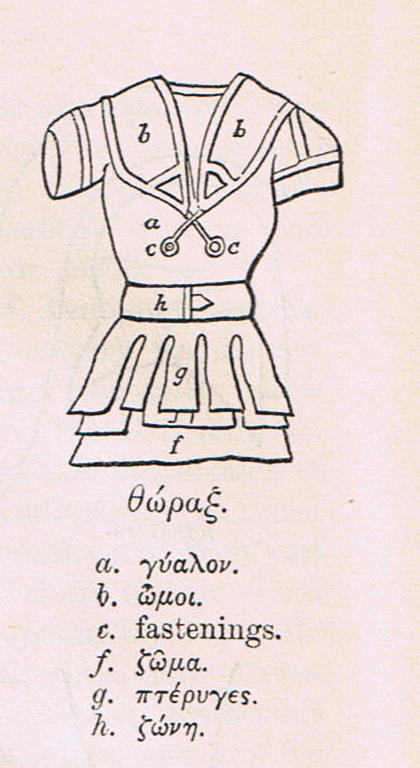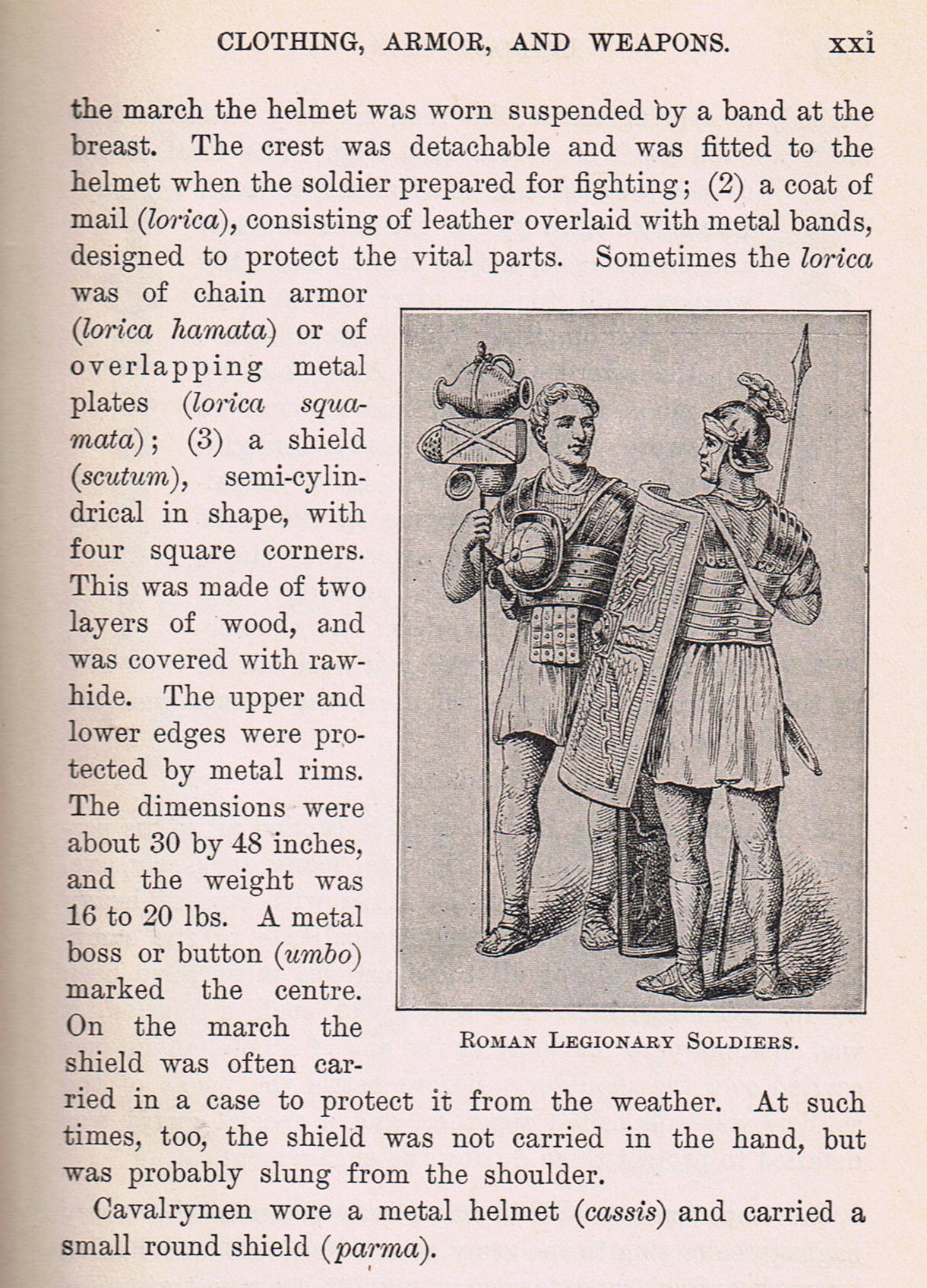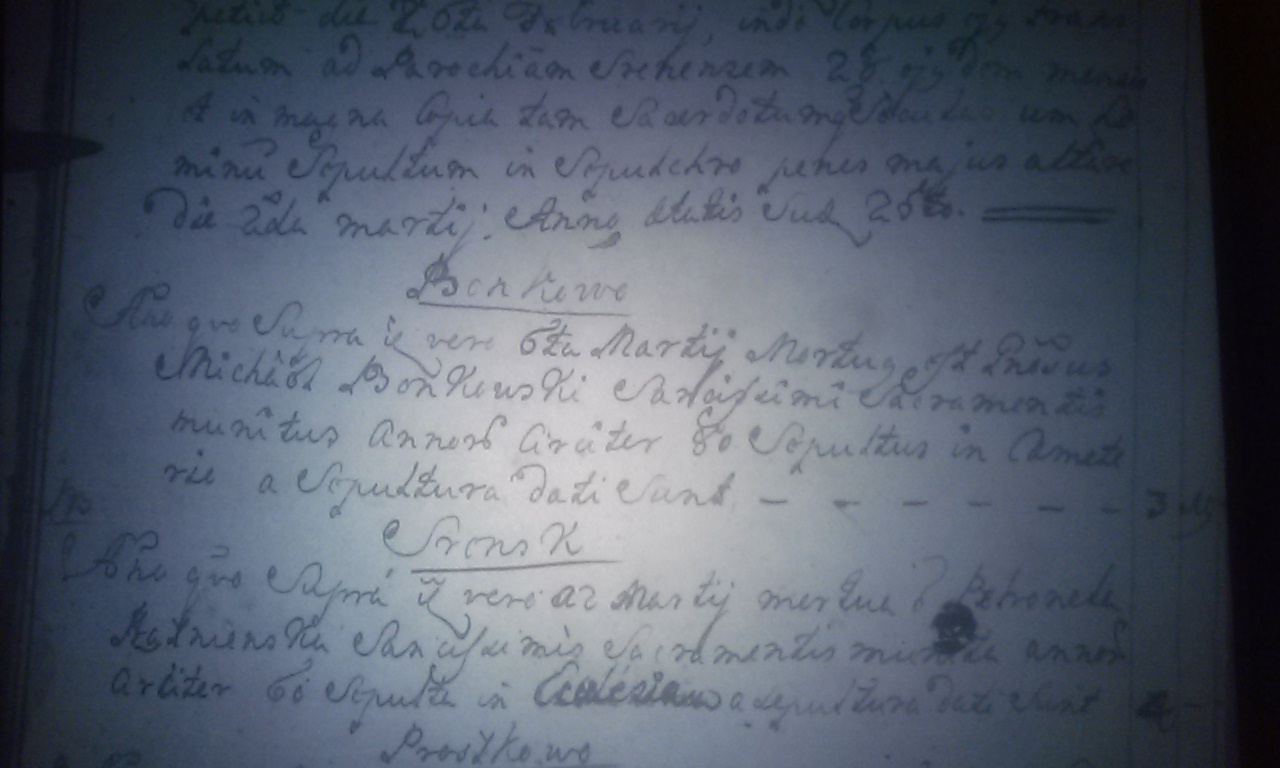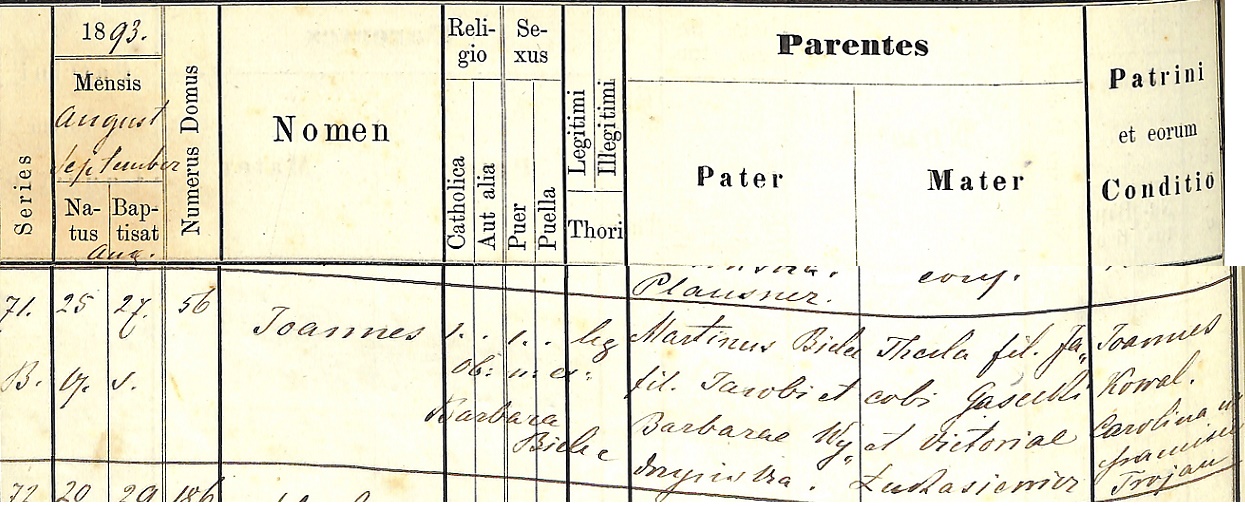Elzbieta PorteneuvePO Top Contributor
Joined: 09 Nov 2012
Replies: 3098
Location: Paris, FranceBack to top |
 Posted: Tue Apr 28, 2015 10:26 am
Post subject: Re: name of magnate
Posted: Tue Apr 28, 2015 10:26 am
Post subject: Re: name of magnate
| dnowicki wrote: |
Those lifting (him) up*** actually were Walerian Bielski, a fellow soldier of the armored**** cohort of the Honorable Lord Atanazy Nigczyski(?) of the above noted Treasury and Captain at Losice etc.
Notes: *Illustrissimus/Honorable --- a senator or magnate |
Nancy, Dave,
I am reading your conversation, and learning a lot.
I have a question to Dave: does armored cohort mean chorągiew?
http://pl.wikipedia.org/wiki/Chor%C4%85giew_%28wojsko%29
In Atanazy's wiki
http://pl.wikipedia.org/wiki/Atanazy_Mi%C4%85czy%C5%84ski
it is written:
We wrześniu 1683 roku wziął udział w bitwie pod Wiedniem. Stał na czele pułku, składającego się z trzech chorągwi (w tym dwóch jego braci Andrzeja i Stanisława) oraz oddziału dragonii
//
In September 1683 he took part in the Battle of Vienna . He was the head of the regiment, consisting of three squadrons (including two of his brothers Andrew and Stanislaus) and branch dragoons.
I am fascinated to arrive to the Battle of Vienna through genealogy.
Best,
Elzbieta
|
|
|
dnowickiPO Top Contributor
Joined: 28 Dec 2011
Replies: 2787
Location: Michigan City, IndianaBack to top |
 Posted: Tue Apr 28, 2015 9:19 pm
Post subject: Choragiew = Cohors loricata ????
Posted: Tue Apr 28, 2015 9:19 pm
Post subject: Choragiew = Cohors loricata ????
Elzbieta,
The answer to your question "Does armored cohort mean choragiew?" is "Perhaps." To understand why I can only say "Perhaps" we need to analyze the Latin. The record is using words that were more than 2000 years old at the time the record was written to describe things which were contemporary to the writer and the record itself does not tell us what the writer understands by those words. So let us look at the words. The two crucial Latin words are "Cohortis Loricati". I am sure the priest was familiar with the Latin word cohors, cohortis, meaning "cohort." He most likely first encountered the word early on during his study of Latin in Julius Caesar's "The Gallic Wars" and he undoubtedly was familiar with the word from the Gospel accounts of the Passion. A cohort was 10% of a Roman Legion. A legion was made up of 10 cohorts and a cohort was made up of 3 maniples and a maniple was made up of 2 centuries and the theoretical strength of a century was 100 men. So a cohort was made up of 600 soldiers and a legion was made up of 6,000 soldiers. But the author is not talking about the Roman Legions but instead is talking about a Polish military group in about the year 1700. So the most we can say with certainty is that he was using the word cohort to refer to a Polish military group.
Now we need to examine the word "loricati" which literally means "wearing a cuirass" or "equipped with a lorica" A cuirass is an even more ancient term than cohort and it describes upper body armor worn first by Greek soldiers and later by soldiers of the Roman Legions. Again, the writer cannot be referring to armor worn by the ancient Greeks of Romans. The image of the Greek cuirass dates from the time of Xenophon's Anabasis (c. 400 B.C.) and the Roman cuirass from the time of Julius Caesar. I would picture the upper body armor referred to more like the breastplate worn by the Polish husaria in the third image. Since the record does not make clear what the cuirass referred to, I translated loricati in a more generic way as "armored" since the more technical word, cuirass, is not exactly a daily household term.
Now that we have examined the words in the text, the best conclusion we can come to is that Walerian Bielski had been part of a group of Polish soldiers who wore upper body armor (i.e. a breastplate). Perhaps that meant choragiew but perhaps it was being used to describe another group of Polish soldiers at that time. I don't know enough about the makeup of the Polish military at that time to say with certitude exactly what the Latin was describing and I don't know that it is possible to know what the priest had in mind when he wrote those words.
Sobieski and the Battle of Vienna is so very interesting and historically important that it is a shame that many in the USA have never even heard of it. Sobieski in my opinion embodied much of what was good about the elected Polish monarchy in his efforts on behalf of the nation. That is not to say that he was not personally ambitious because he was a politician and not a plaster saint and he was not above using circumstances to get elected to the office of king. Many years ago I read an account of how he manipulated things to get himself elected. He waited to show up for the election until he could use his entrance for the greatest possible effect. He, of course, was Grand Hetman fresh from military victories and, as the story goes, the electors were divided between foreign candidates. So Sobieski arranged for some of his supporters to enter before him. These supporters called out to the electors: "Let a Pole rule over Poland!" and Sobieski walked in and the rest is, as they say, history. That, of course, was well before the siege of Vienna.
Until next time.
Dave
| Description: |
|
| Filesize: |
48.28 KB |
| Viewed: |
8102 Time(s) |

|
| Description: |
|
| Filesize: |
430.66 KB |
| Viewed: |
8102 Time(s) |

|
| Description: |
|
| Filesize: |
47.77 KB |
| Viewed: |
8102 Time(s) |

|
|
|
|
dnowickiPO Top Contributor
Joined: 28 Dec 2011
Replies: 2787
Location: Michigan City, IndianaBack to top |
 Posted: Wed Apr 29, 2015 8:16 pm
Post subject:
Posted: Wed Apr 29, 2015 8:16 pm
Post subject:
Nancy.
From your post of the multo melior (much better; literally: better by much---one of those interesting Latin constructions called an Ablative of Degree of Difference) copy of Franciszek's baptismal certificate it is clear that the parish priest of Szrensk copied the certificate into the parish register. He could have just inserted the certificate but it is safe to assume that after he copied the information into the register he probably returned the certificate to the parents. The text of the certificate makes it clear that the Bonkowskis time in Loscice was not intended to be more than temporary (pro tunc/for then/for that time). It would appear that one year after the baptism either the family was getting ready to leave Loscice or they wanted to have the document on hand for when they would move on. I would say that the reason the info was entered into the register of Szrensk was because that was their permanent "home parish" and there are a number of both ecclesiastical as well as civil reasons why it would have been more convenient for the record to have been kept "on file" there.
I'll not repeat what I wrote yesterday regarding the meaning of the words "cohort" and "armored" but suffice it to say that the words themselves provide no indication of the priest's specific understanding of how those ancient words fit into his "modern" 18th Century world. The word commilito/fellow soldier does not refer to Walerian's relationship to Mateusz but simply indicates that he was a comrade of those with whom he served. While it is certainly interesting to speculate about possible connections to the Battle of Vienna it is important to keep in mind that they are speculations which are not supported by the language used in the document. On the other hand, the language of the document does not negate the possibility that such speculations may have some basis in reality. It is important to keep in mind that it is possible to over analyze the record. Remember that even though it is more detailed than the usual baptismal record it is still just a utilitarian document and not a great literary work.
Anyway, here is the death record.
Dave
Latin Text: Szrensk
Die 4 7bris mortuus est Nobilis* Matthaeus Bonkowski (illegible word) Szrensk munitus praevia feriatuli** confessione sepultus in Ecclesia.
Translation: Szrensk
On the 4th day of September the Noble* Mateusz Bonkowski (illegible word) Szrensk died after having been fortified by Confession for the previous holy day (and) he was buried in the church.
Notes: *Nobilis/Noble: owner or leaseholder of a parcel of land
**feriatuli/holy day: The record does not state which holy day the word refers to. The closest holy day I can think of would be Our Lady of Czestochowa on August 26.
P.S. Are you sure that this is the same Mateusz Bonkowski as in the baptismal certificate? I ask because the degrees of nobility based on the titles do not match---Illustrissimus ac Generosus/ Honorable and Well-born on the one hand and just plain old Nobilis/Noble on the other.
|
|
|
BobKPO Top Contributor

Joined: 11 Nov 2008
Replies: 231
Location: Portland, Oregon USABack to top |
 Posted: Wed Apr 29, 2015 10:00 pm
Post subject:
Posted: Wed Apr 29, 2015 10:00 pm
Post subject:
Dave, Let me know when you Publish your book on "Latin document translations" !
|
|
|
nercellPolishOrigins Patron
Joined: 21 Aug 2014
Replies: 287
Back to top |
 Posted: Wed Apr 29, 2015 10:38 pm
Post subject: Soldiers and their battles
Posted: Wed Apr 29, 2015 10:38 pm
Post subject: Soldiers and their battles
Dave,
Then the record does not support the fact that Mateusz was a soldier. I imagined that may have been the connection between , Mateusz, Walerian and even Atanazy. Nobles were expected to take up the sword in battle when called upon by the king. I may still try to research this avenue, if such records are extant. Sometimes it is more difficult to find what records are available regarding our specific areas of research, as it is to find the actual records of our relative.
As for this being the same Mateusz. I had some concern. I had noticed the lack of titles...besides, it having taken place in Szrensk, not Bonkowo. The death registers are complete for the entire eighteenth century. I did not find any other Mateusz B. There was another Mateus- married to a Ewa-that appeared in Bonkowo for a short period at this time. He had one child and acted as a godfather on 2 occasions. It is possible that this burial referred to him, not to 'my' Mateusz. Now, that you have suspicions as well, I guess its back to the drawing board.
As for the copying of the document. There still is the matter of it being in the midst of the records of 1715, not 1705.
Frustrating, but so inticing, trying to solve 300 year old mysteries.
The battle of Vienna is such an important episode in the history of the Church, let alone the world. We can all be proud of Poland's mighty role.
Our discussion inspire me to watch "The siege of Vienna " (for the 3rd time ).
G'night Dave,
Nancy
| Description: |
|
| Filesize: |
1.26 MB |
| Viewed: |
8102 Time(s) |

|
|
|
|
dnowickiPO Top Contributor
Joined: 28 Dec 2011
Replies: 2787
Location: Michigan City, IndianaBack to top |
 Posted: Thu Apr 30, 2015 8:35 am
Post subject:
Posted: Thu Apr 30, 2015 8:35 am
Post subject:
Bob,
At this time of the year I'm working on my treatise on the spring planting of vegetables so the Latin translation book is on the back burner. I'll let you know when I begin the Latin translation book---but it probably will not happen until after the harvest is in---just like wedding time used to be in rural Poland.
Dave
|
|
|
dnowickiPO Top Contributor
Joined: 28 Dec 2011
Replies: 2787
Location: Michigan City, IndianaBack to top |
 Posted: Thu Apr 30, 2015 8:58 am
Post subject: Solving 300 Year Old Mysteries
Posted: Thu Apr 30, 2015 8:58 am
Post subject: Solving 300 Year Old Mysteries
Nancy,
The reason for the 10 year delay between the baptism and the entry in the register of Szrensk may be as easy (or as difficult) as finding out where Mateusz was hanging his hat---or shall I say, his sword---during those ten years. Perhaps he didn't return to his home base until then. Another possible reason for the delay could be that nothing was happening in Franciszek's life that required his baptismal certificate. 1714-15 was probably around the time that he would be receiving Communion for the first time. (The age for Communion was much later than the current age. It was lowered from 12-14 by Pope Pius X in the early 20th Century.)
It appears that the higher szlachta moved around more than their poorer relations. Some questions which occur to me are: Are there records of any children after Franciszek? Did he have any older siblings? Do Mateusz and/or his wife appear as sponsors or marriage witnesses during that 10 year period? If so, where?
I guess I'm lucky that my ancestors who had the title of Falcifer/Kosa-bearer generally used their kosa in the same area for their whole career so they generally were not hard to find at any given time.
Dave
|
|
|
dnowickiPO Top Contributor
Joined: 28 Dec 2011
Replies: 2787
Location: Michigan City, IndianaBack to top |
 Posted: Fri May 01, 2015 7:18 pm
Post subject: Marriage of Walenty Amborski & Maria Nowak for Mountain
Posted: Fri May 01, 2015 7:18 pm
Post subject: Marriage of Walenty Amborski & Maria Nowak for Mountain
Mountain Path,
After a month or so, here is the translation of the marriage record for Walenty Amborski & Maria Nowak. The image was posted on page 70 of Latin Translations and is the record above the entry for the marriage of Jan Amborski & Maryanna Hyskowa. Sorry that it took so long to post the translation of the second entry.
Dave
Latin Text: Starezyn Anno Domini 1835 die 12a (= duodecima) Novembris Ego curatus loci praemissis tribus denuntiationibus continuis tribus diebus Dominicis coram populo ad Divina* congregato nulloque detecto impedimento tam Canonico quam etiam civili in matrimonium conjunxi laboriosum** Valentinum Amborski juvenem habentem annos 26 et laboriosam** Mariam Nowak viduam habentem annos 25. Testes fuerunt Andreas Amborski; Valentinus Bilski; Franciscus Drzewicki; et Joannes Kaczor.
Translation: (The village of) Starezyn: On the 12th day of November in the Year of Our Lord 1835, I, the curate of the place, after the three announcements (of the banns) had been proclaimed beforehand on three sequential Sundays in the presence of the people gathered together for the Divine Rites** and since no impediment, neither Canonical nor civil had been detected, joined together in marriage the industrious** Walenty Amborski, a single young man, 26 years of age, and the industrious** Maria Nowak, a widow, 25 years of age. The witnesses were Andrzej Amborski, Walenty Bilski, Franciszek Drzewicki, and Jan Kaczor.
Notes: *Divina/Divine Rites = Sunday Mass
**laboriosus/industrious is an adjective used to denote a peasant
|
|
|
nercellPolishOrigins Patron
Joined: 21 Aug 2014
Replies: 287
Back to top |
 Posted: Sat May 02, 2015 12:50 am
Post subject: more Bonkowski deaths
Posted: Sat May 02, 2015 12:50 am
Post subject: more Bonkowski deaths
| dnowicki wrote: |
It appears that the higher szlachta moved around more than their poorer relations. Some questions which occur to me are: Are there records of any children after Franciszek? Did he have any older siblings? Do Mateusz and/or his wife appear as sponsors or marriage witnesses during that 10 year period? If so, where?
Dave |
Dave,
Mateusz and Anna had 11 children over a span of 28 years btwn 1687 and 1715..(poor woman). At least this is what is documented in the Szrensk parish books. There may be more in other parishes. A birth in 1702 is documented...the next is in 1705. This fits and would mean that the Bonkowskis were in Losice for two years or less. There is a long gap between 1696 and 1702. Perhaps they were in another location during this time as well.
I still can't figure out why the copy is labled as having been written in 1705 when it appears after the 1714 records. ..I didnt realize that first holy communion was made so late. I was confirmed at the age of 12.
I believe the petty nobles had to work the land. The wealthier szlachta could afford to leave his folwark in the hands of a trusted overseer. Often times, they held an official position. There were 2 conditions for a noble to be appointed to such positions. One must be over the age of 23 and have considerable wealth. What was considered 'considerable' I've no idea.
I have attached a few more records re Mateusz's family. I think this Michal may be his brother.
Oh...btw...all of my family were nomadic by nature. My Irish forbears beat this bunch by far. They hopped about towns, counties and even a few countries...this made for a difficult but interesting hunt.
Enjoy your garden Dave...I can almost see the smile on your rake wielding forbear's face. : - )
Nancy
| Description: |
|
| Filesize: |
220.33 KB |
| Viewed: |
8102 Time(s) |

|
| Description: |
|
| Filesize: |
253.46 KB |
| Viewed: |
8102 Time(s) |

|
|
|
|
dnowickiPO Top Contributor
Joined: 28 Dec 2011
Replies: 2787
Location: Michigan City, IndianaBack to top |
 Posted: Sun May 03, 2015 9:35 pm
Post subject: Death & Burial of Michal Bonkowski
Posted: Sun May 03, 2015 9:35 pm
Post subject: Death & Burial of Michal Bonkowski
Nancy,
Let it not be said that the records you post do not usually involve novel twists and turns. The last words of the death record of Michal Bonkowski had me befuddled for a while. The Latin was easy enough so that any first year Latin student should have no problem with the translation. All you have are a preposition, a noun and the Third Person Plural Perfect Indicative Passive of the verb do, dare, dedi, datum, to give. It translates as "they were given from the burial." The befuddlement arose from the question about what "they" refers to. Nothing in the text of the record fit the bill and then the same words were used at the conclusion of the following entry. So I decided to try my luck with the other post. There two of the records concluded with the third person singular of the Perfect Indicative Passive of the same verb (datus est) but another record on the page contained a word which was the key to unlocking the bothersome mystery---"gratis". So it turns out that the words refer to the offering/fee given by the family of the deceased for the burial. In the record for Michal there are two columns on the far right of the entry---one has the number 3 and the other column contains letters which I am unable to determine due to the darkness of that part of the record. The offering/fee was 3 of whatever coin of the realm the letters signify. For the page on which Jozef's record appears, that which was given should appear on the part of the page on the far right which is cut off on the post. However, since the verb is singular the donation/offering/fee was 1 of whatever appears on the missing section of the page. Basically, the entries are both a register of the deaths and burials and an account book of what was donated---never a dull Bonkowski record.
Anyway here is the first translation.
Dave
Latin Text: Bonkowo: Anno quo supra die vero 6ta (i.e. sexta) Martij mortuus est Generosus* Michael Bonkowski Sanctissimis Sacramentis munitus annorum circiter 80 Sepultus in Caemeterio a sepultura dati sunt-------------3 (illegible word)
Translation: (The village of) Bonkowo: In the year which is above, actually on the sixth day of March well-born* Michal Bonkowski, strengthened by the Most Holy Sacraments, about 80 years of age, died (and) was buried in the Cemetery. From the burial was given------3 (illegible word)
Note: *Generosus/wellborn = owner of at least one village.
Last edited by dnowicki on Mon May 04, 2015 9:23 am; edited 1 time in total
|
|
|
dnowickiPO Top Contributor
Joined: 28 Dec 2011
Replies: 2787
Location: Michigan City, IndianaBack to top |
 Posted: Sun May 03, 2015 10:10 pm
Post subject:
Posted: Sun May 03, 2015 10:10 pm
Post subject:
Nancy,
Here is young Jozef's record. Notice that there is no mention of his having been strengthened by the Sacraments. The reason is that the only Sacrament he received in his lifetime was Baptism. This fits in with the previous mention of the age at which an individual made their first Confession and received Communion for the first time. (Of course, this applies to the Latin Rite and not the Eastern Rite/Greek Rite Catholics who were baptized and confirmed an received Communion (by having a drop of the sacramental wine placed in the infant's mouth) on the same day. The decree of Pius X which lowered the age for Communion was "Quam singulari" (Latin papal decrees get their name from the opening words of the decree.) which was issued on August 15, 1910. The decree set no specific age but talked about the "age of reason"---the point at which a person is able to determine right from wrong/good from evil. At some point, that age came to be accepted as 7 years of age. In one of the stranger things which took place in the parish where I grew up, for one year and one year only, the nuns got to decide which of the children in first grade had passed the point of knowing right from wrong and which had not. Of the 100 or so in our class about 80 (myself included) made their First Communion in May of first grade and the remaining 20 or so had to wait until the following year. We then ended up receiving Confirmation in November of third grade. As far as I know, that scenario was never repeated---at least I know that my siblings made their Communion in May of third grade.
Anyway, on to the record....
Dave
Latin Text: Bonkowo: 8va (i.e. octava) Augusti mortuus est Josephus Bonkowski filius Nobilis* Nicolai Bonkowski annorum circiter octo sepultus in Caemeterio a sepultura datus est------cut off section of the record.
Translation: (The village of) Bonkowo: On the eighth day of August, Jozef Bonkowski, the son of the Noble* Mikolaj Bonkowski, about eight years of age, (and) was buried in the Cemetery. From the burial was given----cut off section of the record.
Note: *Nobilis/Noble = owner or leaseholder of a parcel of land.
|
|
|
mcdonald0517PO Top Contributor & Patron
Joined: 27 May 2012
Replies: 961
Back to top |
 Posted: Tue May 05, 2015 10:38 am
Post subject: Please translate Bielec birth record
Posted: Tue May 05, 2015 10:38 am
Post subject: Please translate Bielec birth record
Hello Dave,
when you have the opportunity, please translate the attached birth record for Jan Bielec.
Thank you very much!
Cynthia
| Description: |
|
| Filesize: |
257.99 KB |
| Viewed: |
8102 Time(s) |

|
|
|
|
dnowickiPO Top Contributor
Joined: 28 Dec 2011
Replies: 2787
Location: Michigan City, IndianaBack to top |
 Posted: Wed May 06, 2015 8:02 am
Post subject: Birth & Baptism of Jan Bielec
Posted: Wed May 06, 2015 8:02 am
Post subject: Birth & Baptism of Jan Bielec
Cynthia,
Here is the translation of the birth & baptism of Jan Bielec. It is in the form of a PDF document because that allows me to fill in the blanks in a template for columnar records and thus avoid repetitive typing of headings. I imagine that you noticed that the midwife has the same Bielec surname.
Dave
| Description: |
|

Download |
| Filename: |
Birth & Baptism Jan Bielec Translation.pdf |
| Filesize: |
7.94 KB |
| Downloaded: |
1138 Time(s) |
|
|
|
mcdonald0517PO Top Contributor & Patron
Joined: 27 May 2012
Replies: 961
Back to top |
 Posted: Wed May 06, 2015 11:06 am
Post subject:
Posted: Wed May 06, 2015 11:06 am
Post subject:
Hi Dave,
Thank you so much for translating Jan Bielec's birth and baptismal record. I have been looking for and then waiting to receive this record from the archives for a long time - it is exciting to finally have my grandfather's birth record translated. The information will allow me to continue the search for that branch of my family.
Yes, I did notice Barbara Bielec as midwife. As I understand this record, that would mean the grandmother, Barbara Bielec, was the midwife who assisted Tekla in birth and delivered her own grandchild. Is that how you would interpret it?
Thanks again,
Cynthia
|
|
|
dnowickiPO Top Contributor
Joined: 28 Dec 2011
Replies: 2787
Location: Michigan City, IndianaBack to top |
 Posted: Thu May 07, 2015 6:51 pm
Post subject:
Posted: Thu May 07, 2015 6:51 pm
Post subject:
Hi Cynthia,
Although the record itself does not specify a blood relationship between the midwife and the child it is certainly possible and even very probable that Barbara the midwife and Barbara the grandmother are one and the same person. On the other hand, it is also possible that there was another Barbara Bielec in the parish who was a midwife. Probably the best way to figure out if the grandmother was the midwife would be to determine whether the grandmother was still living at the time of Jan's birth and then to look through other birth & baptism records and see how often and for whom Barbara appears as the midwife. Often in records from the Austrian Partition the midwife is described as an "approved" midwife and sometimes as a "private" midwife. The priest who baptized Jan was not one to use more ink than absolutely necessary in the record----way more abbreviations than was usual----and so there is very little recorded about the midwife other than her name. It appears that in contemporary terminology an approved midwife might correspond to what we would call a licensed midwife------probably a very good thing for both the mother and the child presuming that to be approved the midwife had to demonstrate her knowledge and skills.
Hope this sheds a little light on the midwife subject.
Dave
|
|
|
|
|
|






